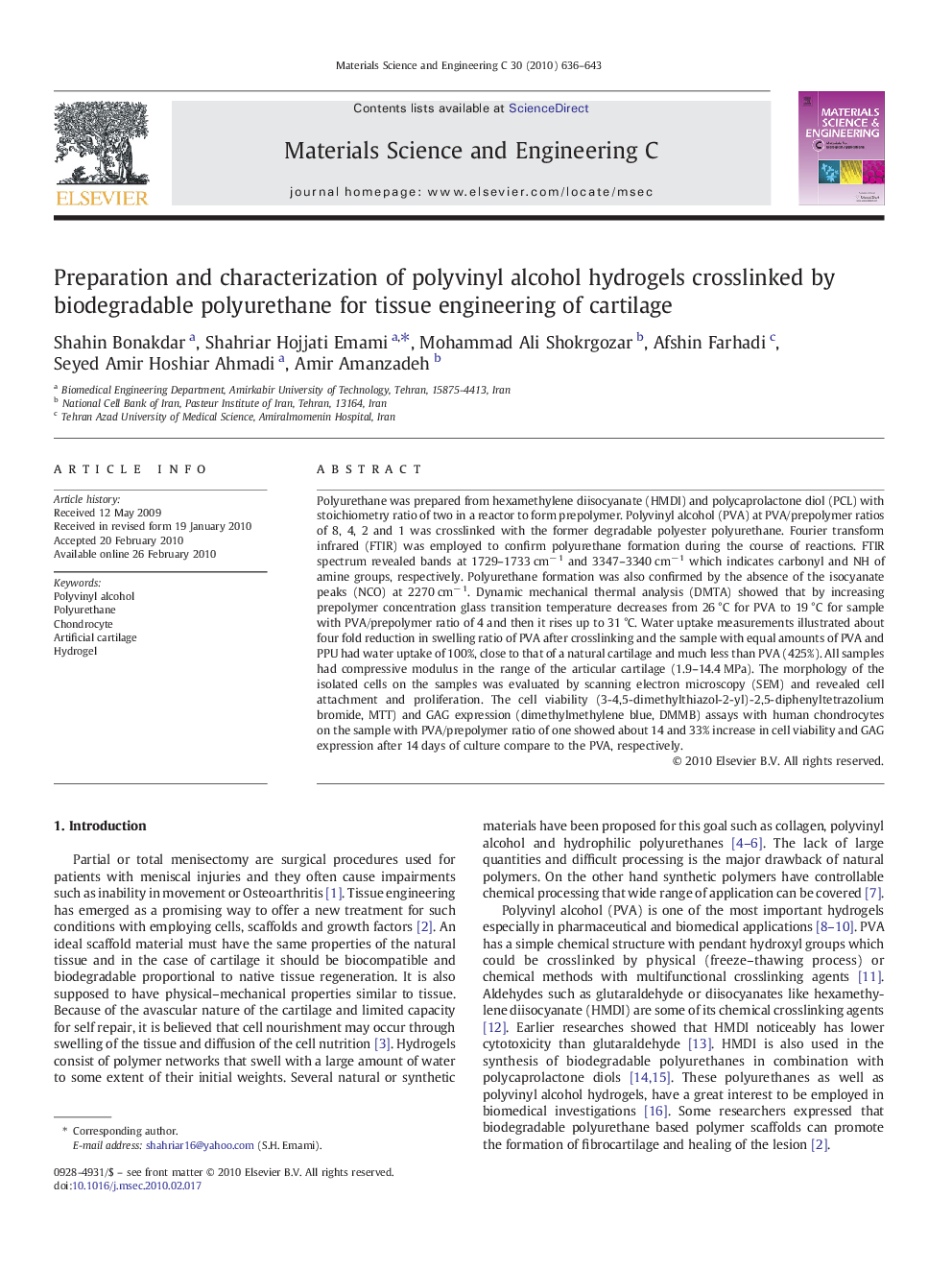| Article ID | Journal | Published Year | Pages | File Type |
|---|---|---|---|---|
| 1430040 | Materials Science and Engineering: C | 2010 | 8 Pages |
Polyurethane was prepared from hexamethylene diisocyanate (HMDI) and polycaprolactone diol (PCL) with stoichiometry ratio of two in a reactor to form prepolymer. Polyvinyl alcohol (PVA) at PVA/prepolymer ratios of 8, 4, 2 and 1 was crosslinked with the former degradable polyester polyurethane. Fourier transform infrared (FTIR) was employed to confirm polyurethane formation during the course of reactions. FTIR spectrum revealed bands at 1729–1733 cm− 1 and 3347–3340 cm− 1 which indicates carbonyl and NH of amine groups, respectively. Polyurethane formation was also confirmed by the absence of the isocyanate peaks (NCO) at 2270 cm− 1. Dynamic mechanical thermal analysis (DMTA) showed that by increasing prepolymer concentration glass transition temperature decreases from 26 °C for PVA to 19 °C for sample with PVA/prepolymer ratio of 4 and then it rises up to 31 °C. Water uptake measurements illustrated about four fold reduction in swelling ratio of PVA after crosslinking and the sample with equal amounts of PVA and PPU had water uptake of 100%, close to that of a natural cartilage and much less than PVA (425%). All samples had compressive modulus in the range of the articular cartilage (1.9–14.4 MPa). The morphology of the isolated cells on the samples was evaluated by scanning electron microscopy (SEM) and revealed cell attachment and proliferation. The cell viability (3-4,5-dimethylthiazol-2-yl)-2,5-diphenyltetrazolium bromide, MTT) and GAG expression (dimethylmethylene blue, DMMB) assays with human chondrocytes on the sample with PVA/prepolymer ratio of one showed about 14 and 33% increase in cell viability and GAG expression after 14 days of culture compare to the PVA, respectively.
